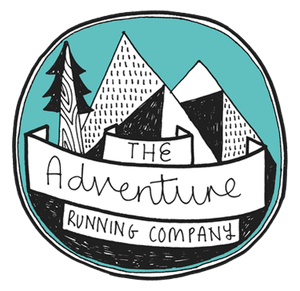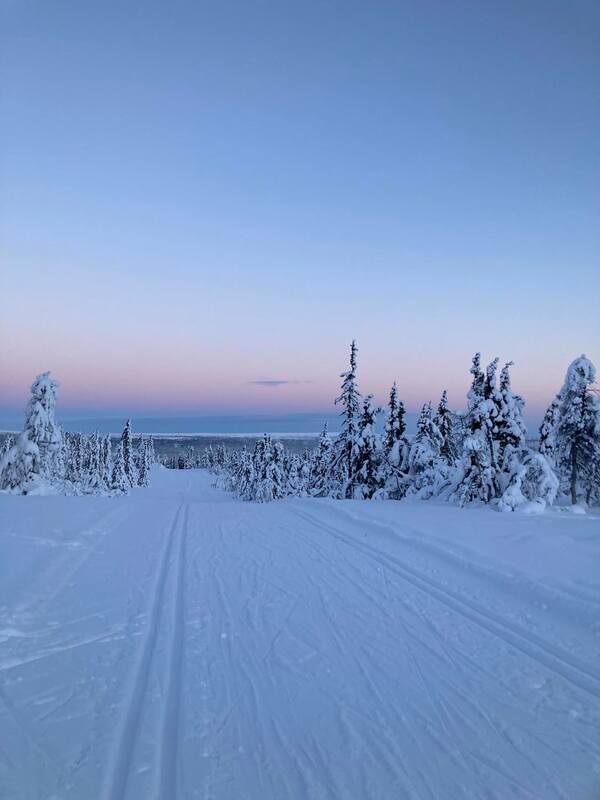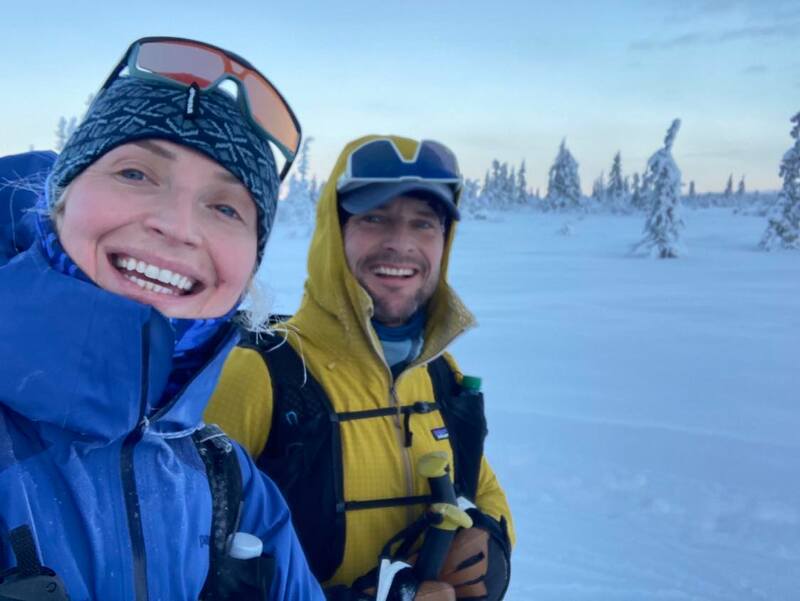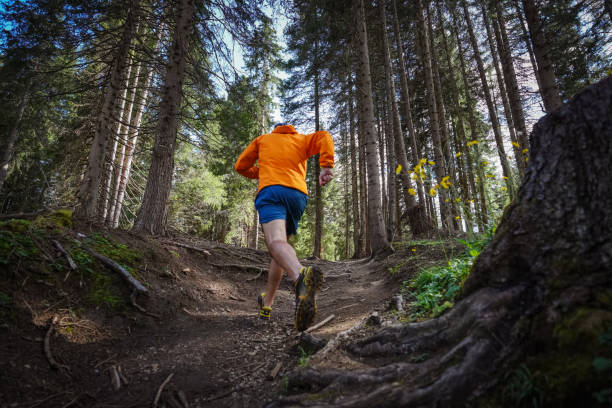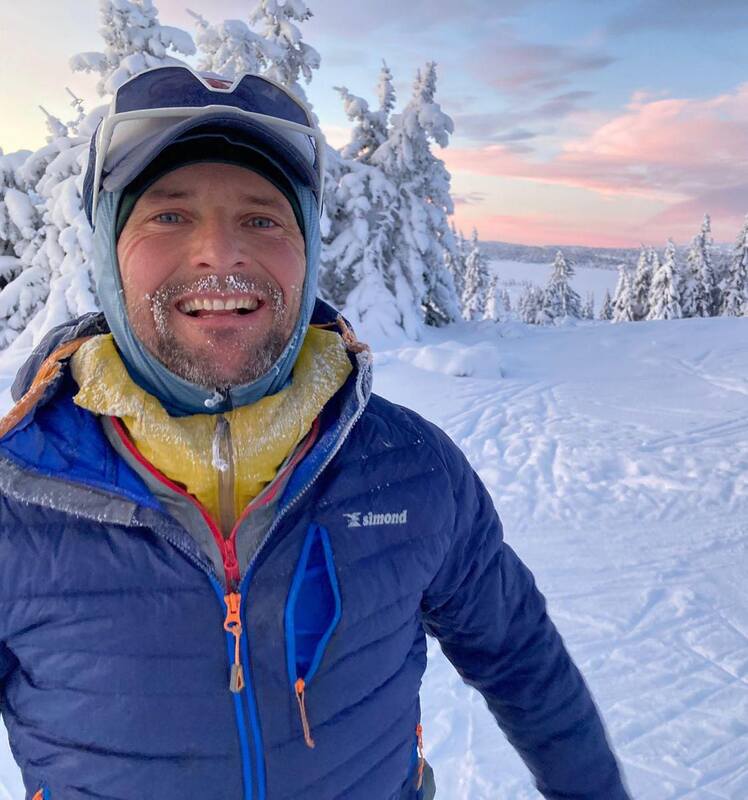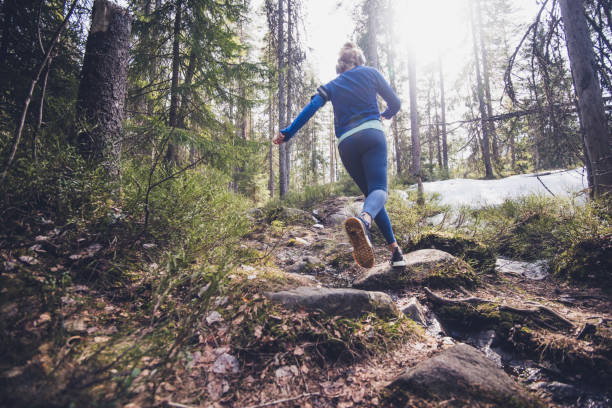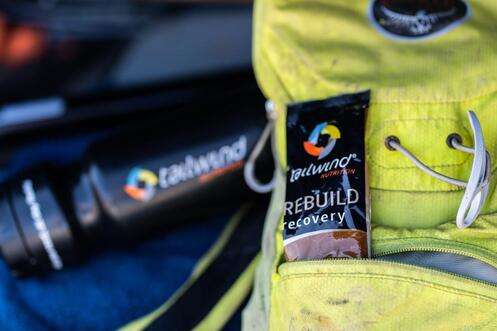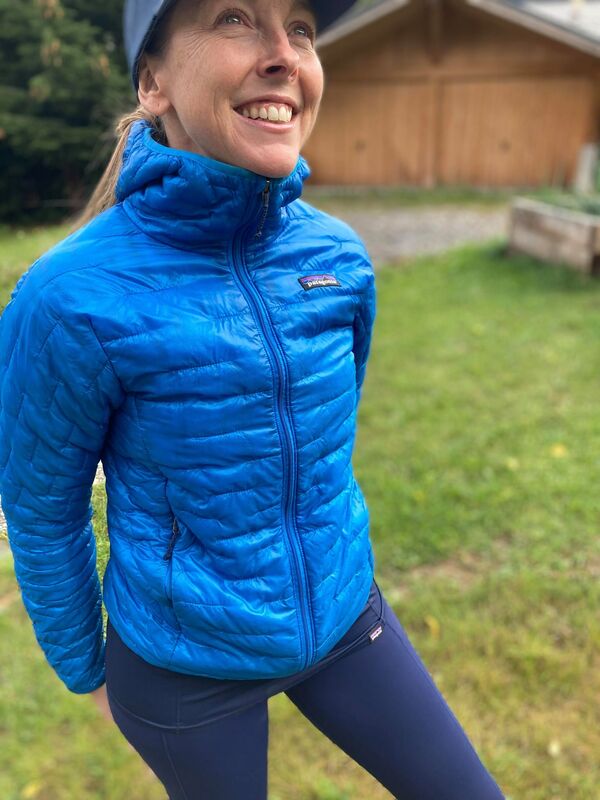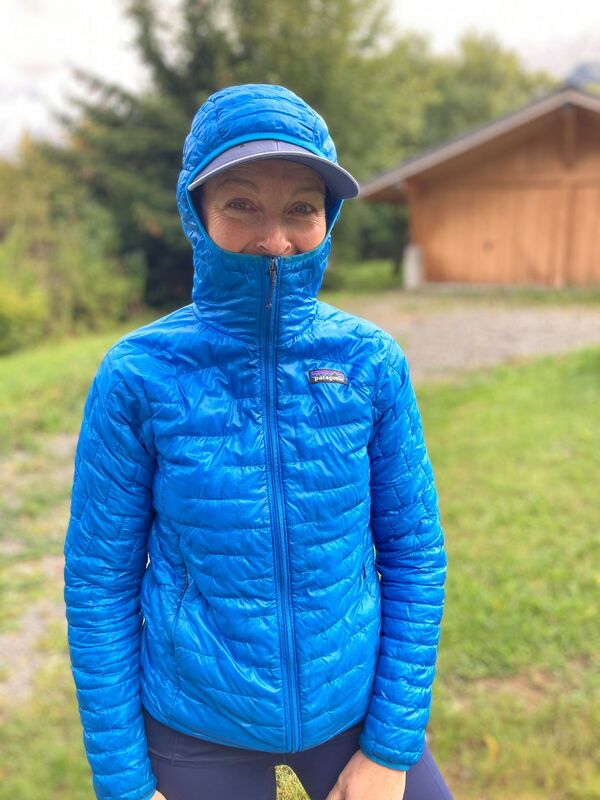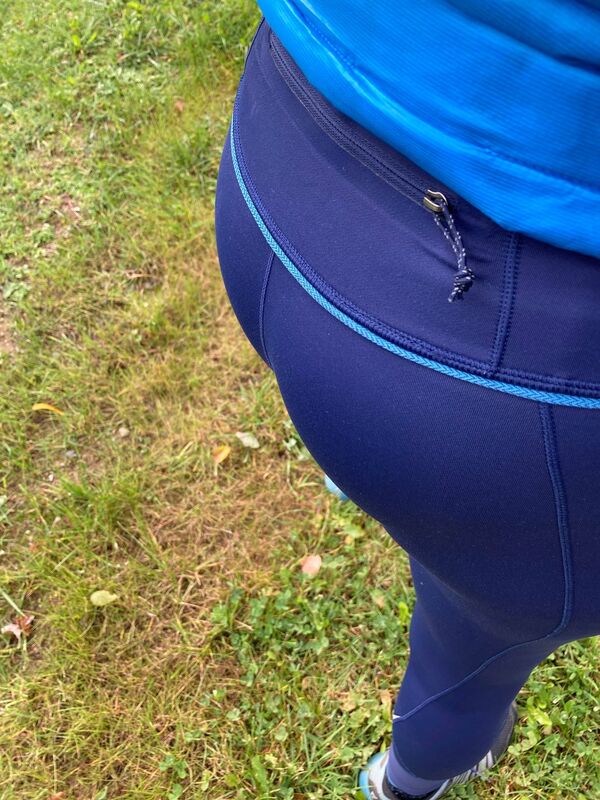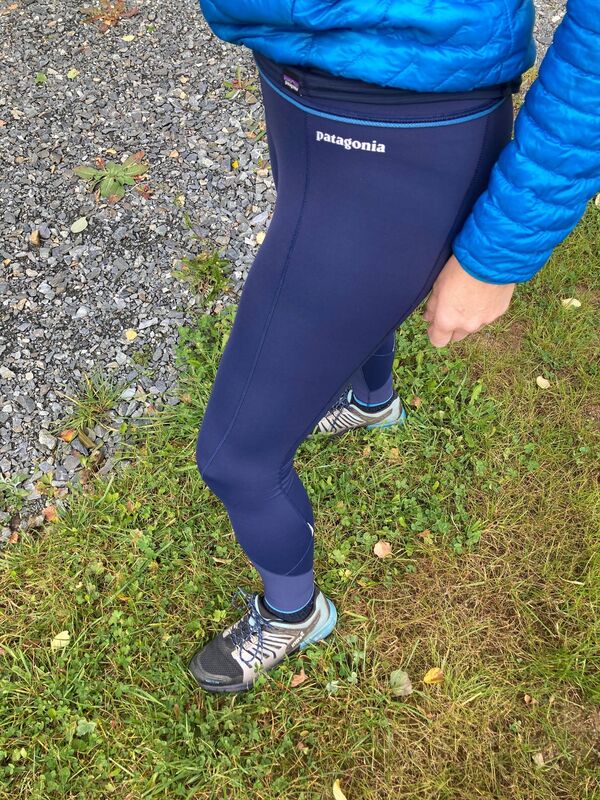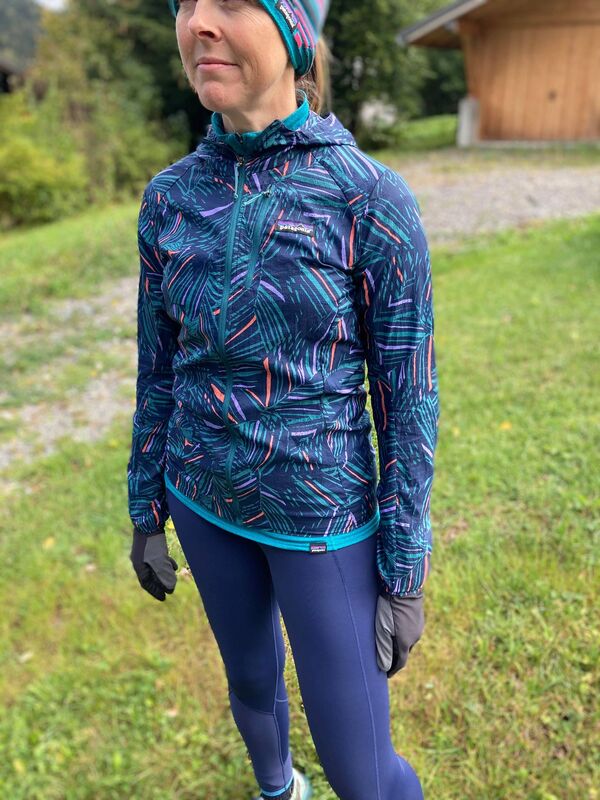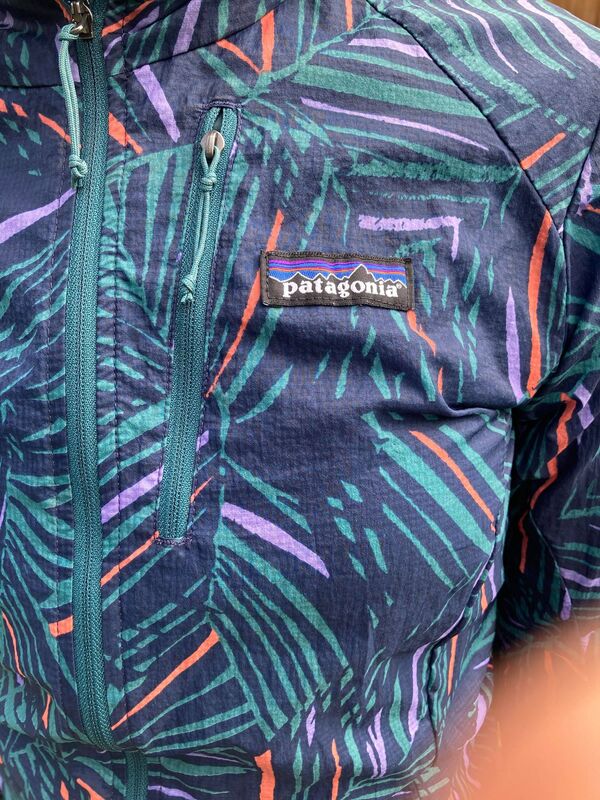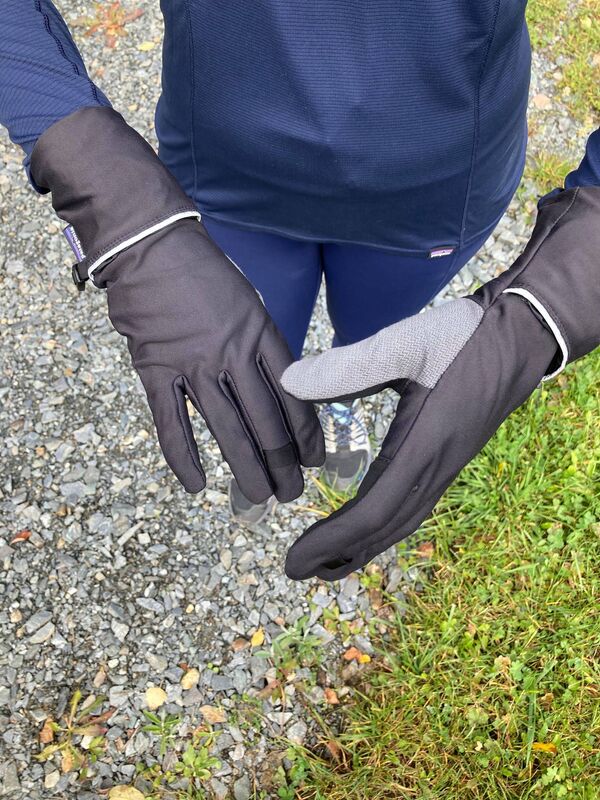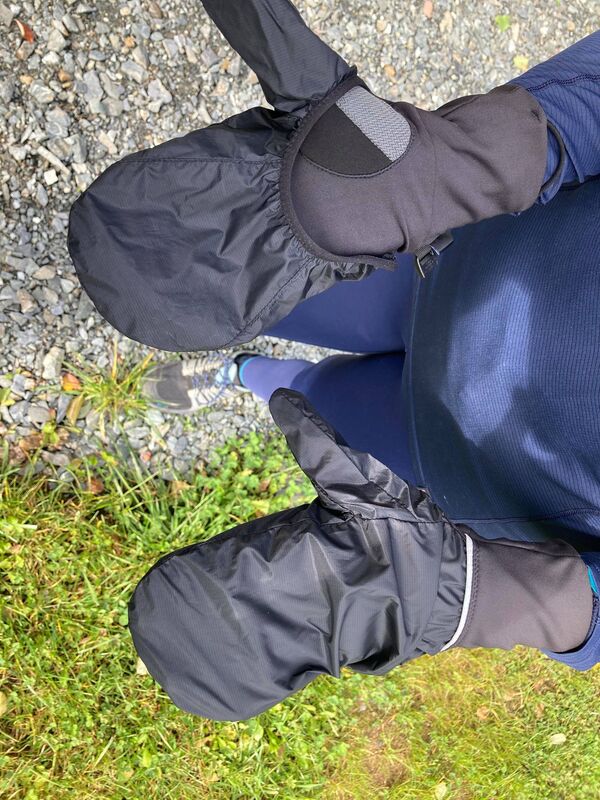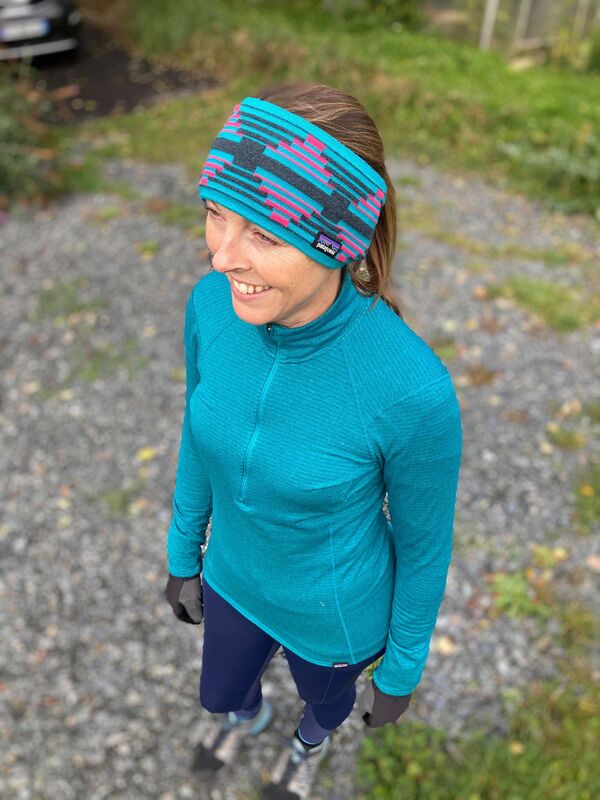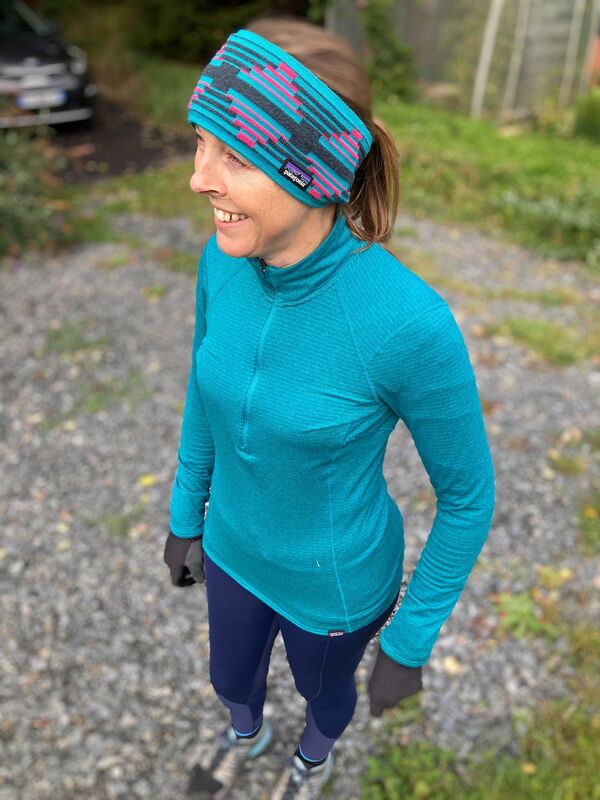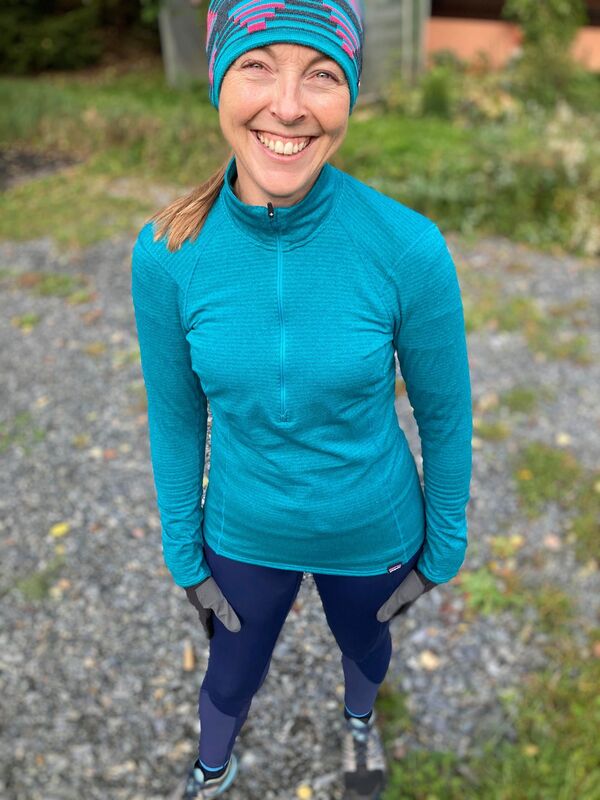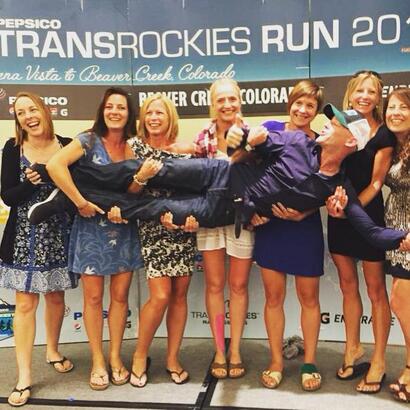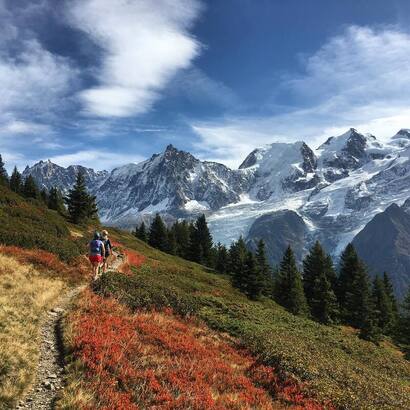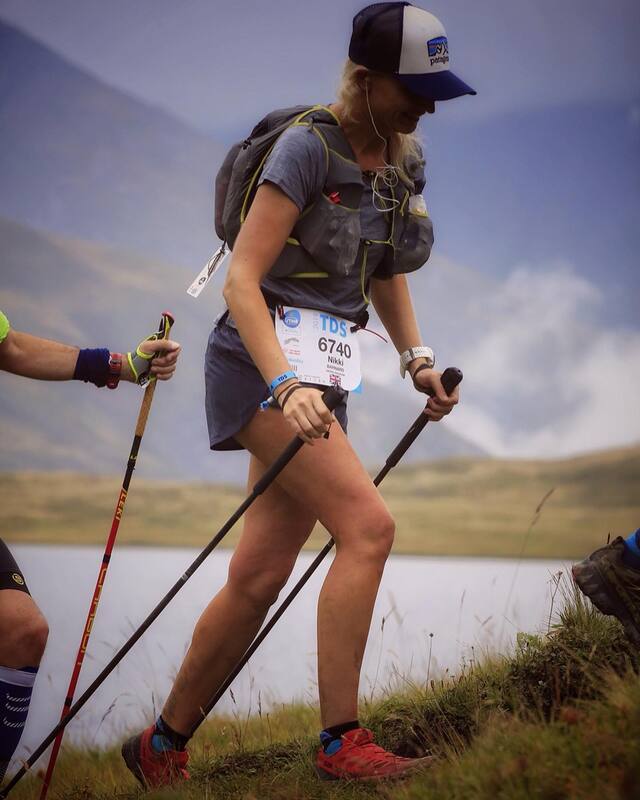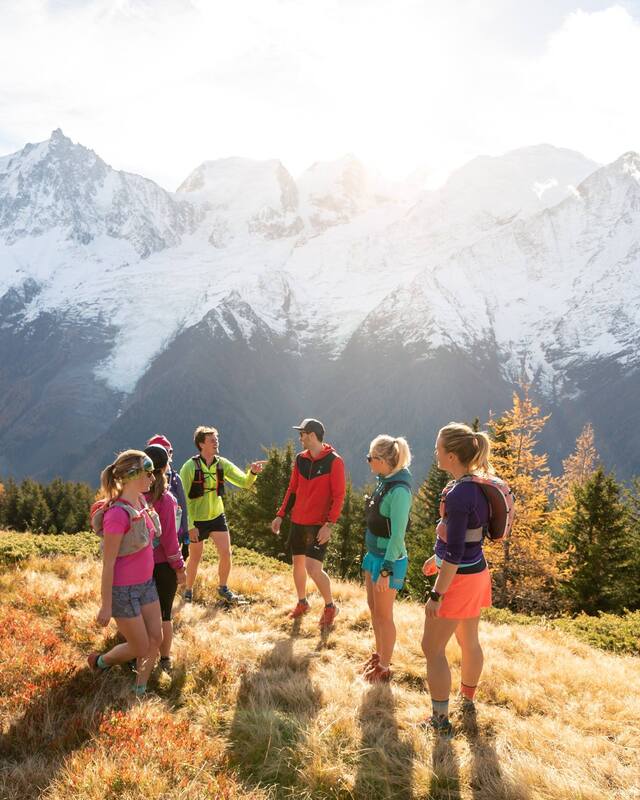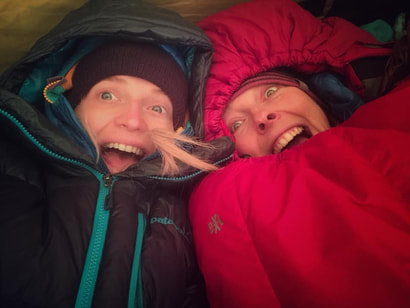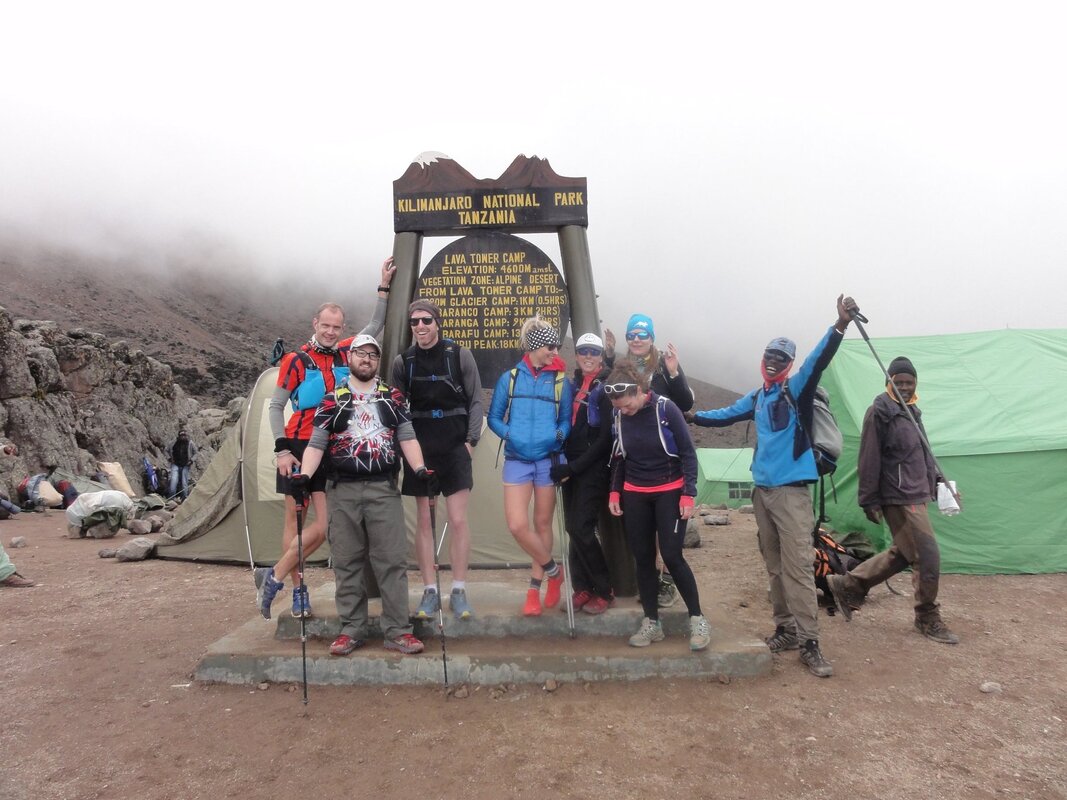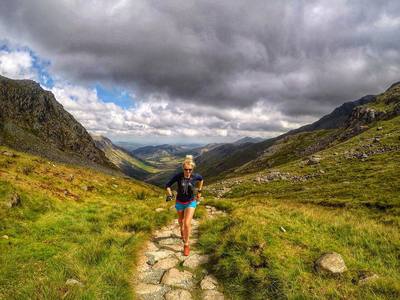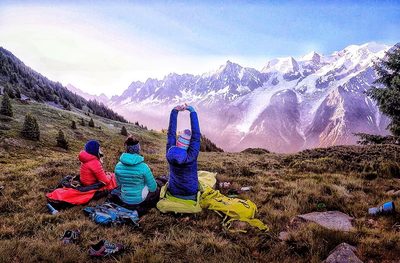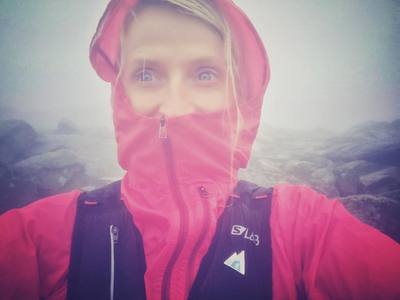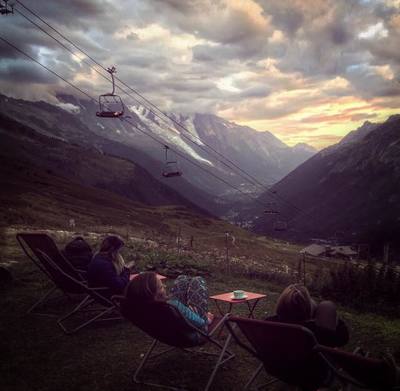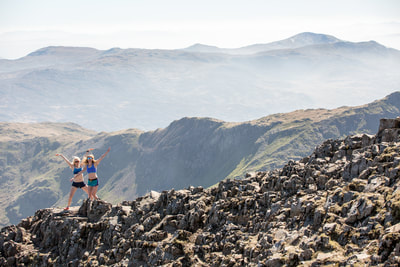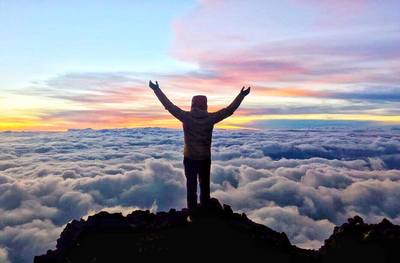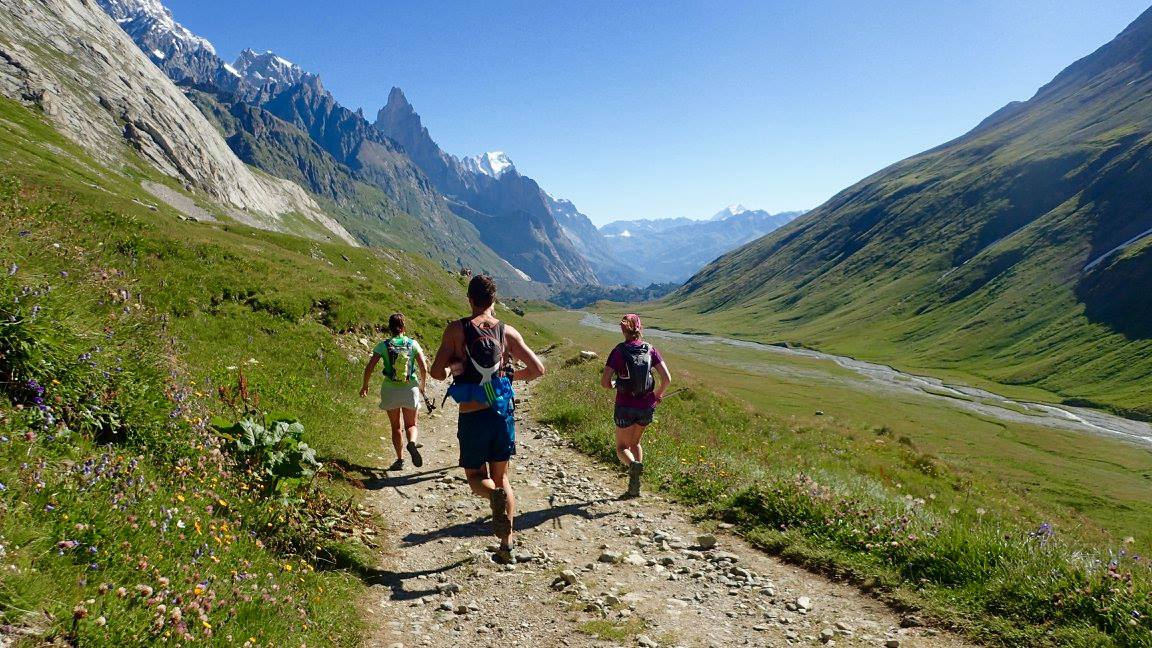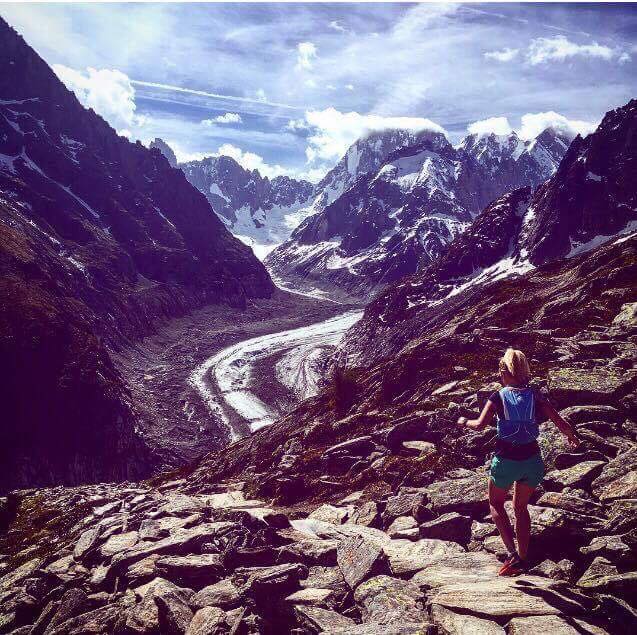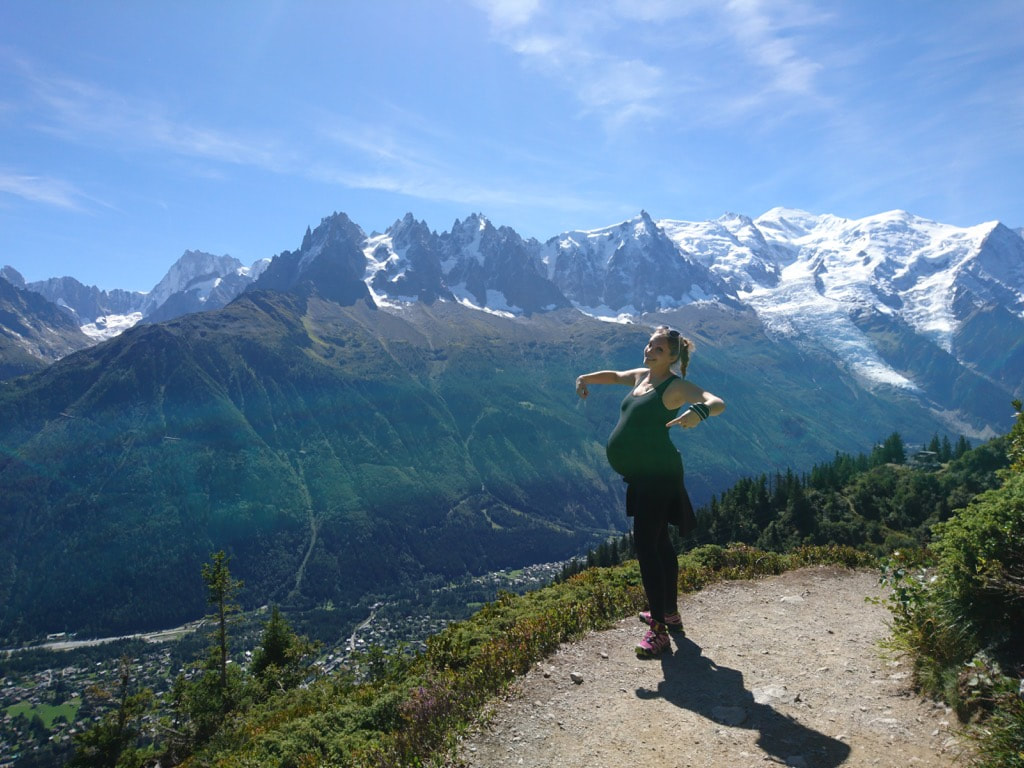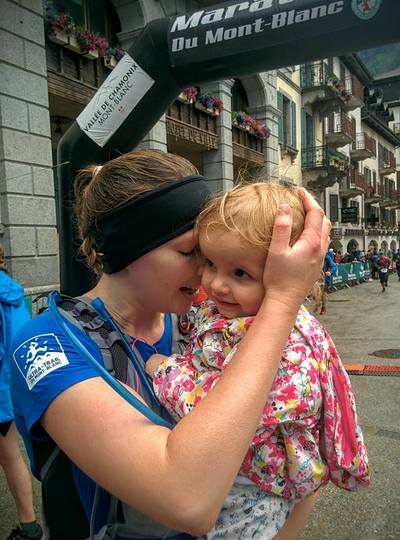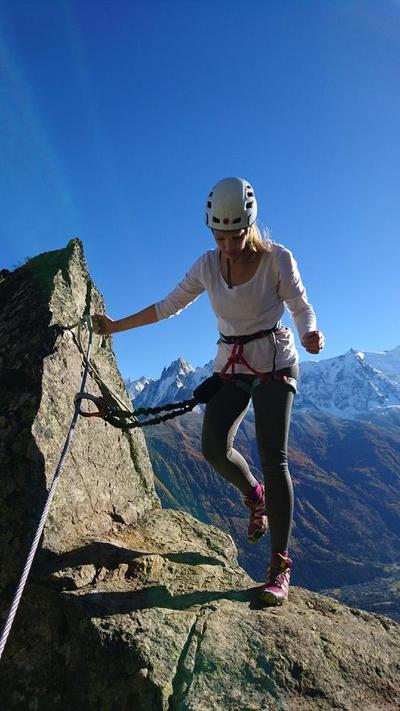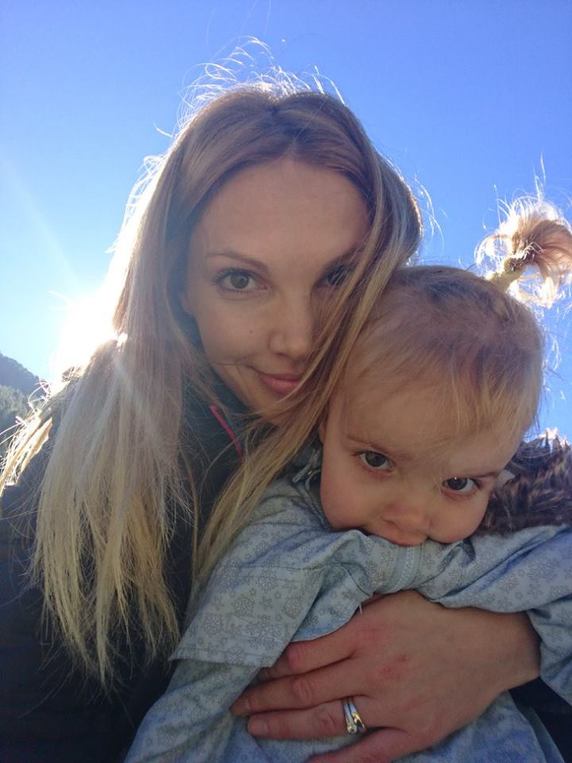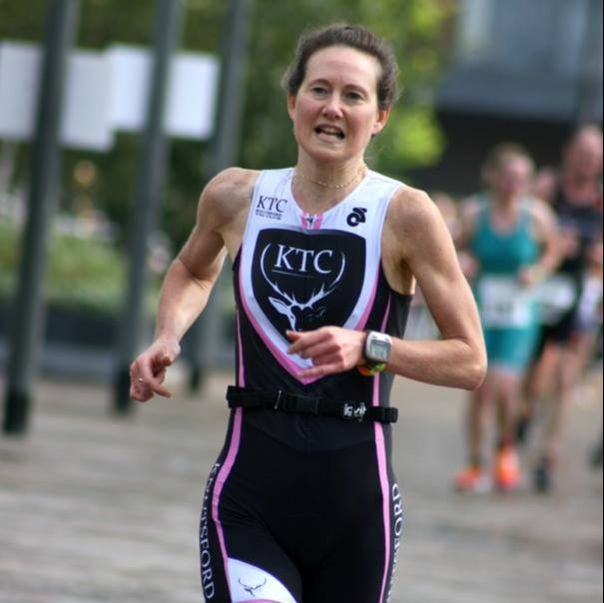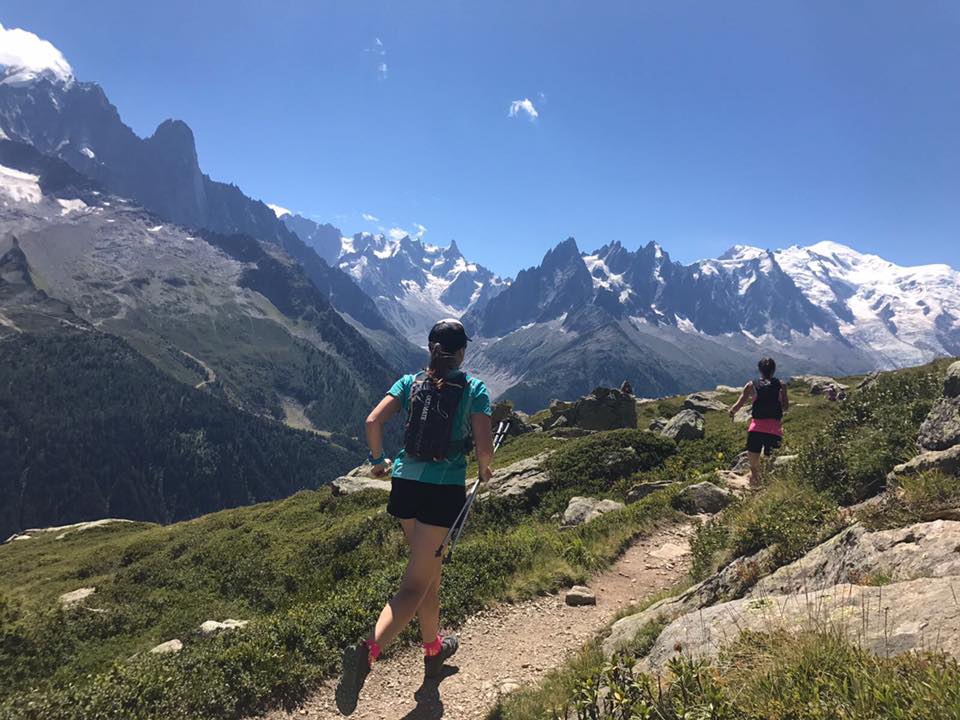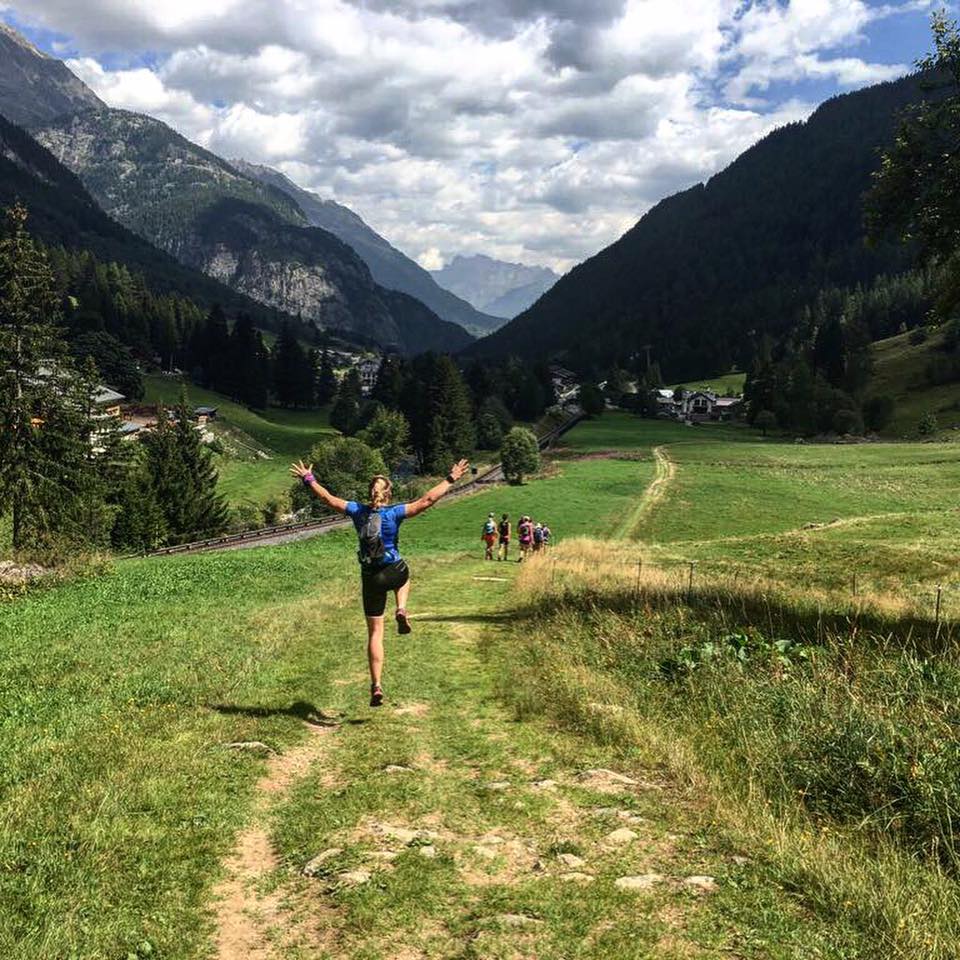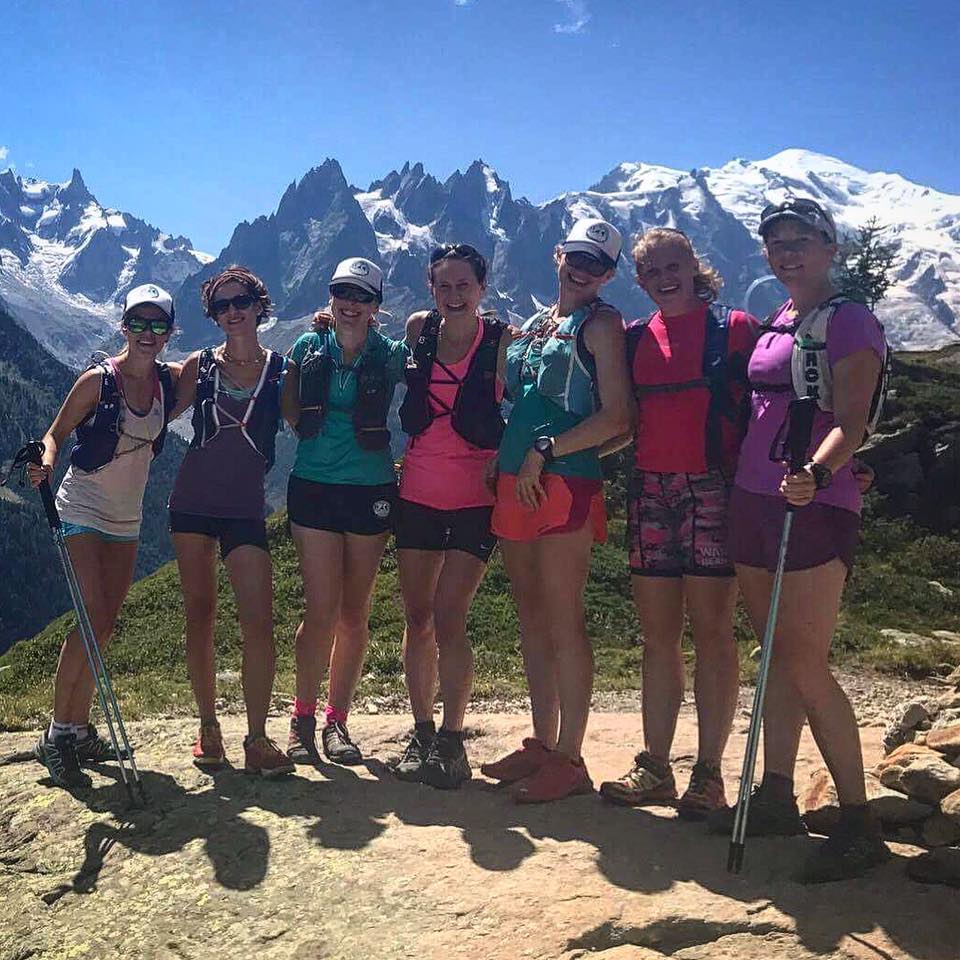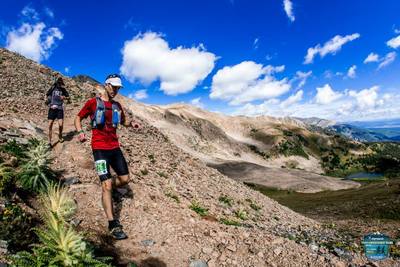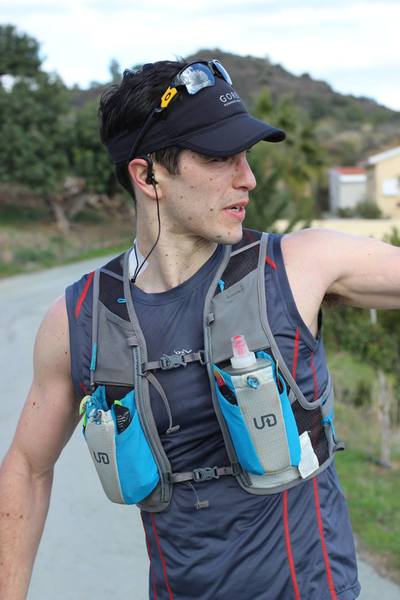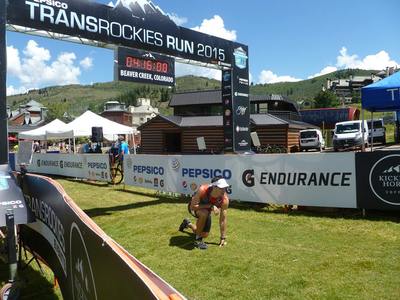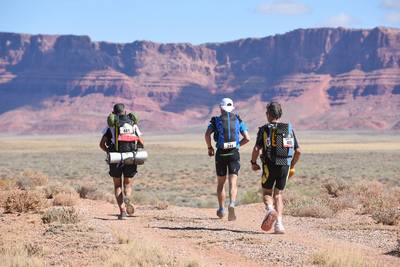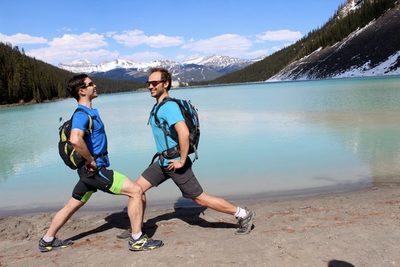|
Hey there, adventure seekers! As autumn unfolds, the days grow shorter and the air gets crisper, bringing with it a magical transformation of the trails. The lush green forests of summer turn into a vibrant canvas of reds, oranges, and golds. It's a magical time for trail running, but it can be challenging to stay motivated as the days get shorter and darker. Fear not, The Adventure Running Company, are here to help you stay inspired and excited about hitting the trails this autumn and winter. Embrace the Seasonal Changes: Rather than mourning the fading daylight, embrace it! The autumn and winter sunsets and the early morning glow offer a different kind of beauty. Equip yourself with a good headlamp or flashlight, and let the play of shadows add an extra layer of excitement to your trail runs. Stunning Autumn Foliage: One of the best perks of autumn and winter trail running is the jaw-dropping foliage. The trees transform into vibrant hues of red, orange, and gold. Soak up the breath-taking scenery and make your runs a visual treat. Take photos and create memories you can look back on later. Mix Up Your Running Routes: To keep things fresh and exciting, switch up your running routes. Explore new trails in your area or revisit old favourites. Autumn and winter offer a unique perspective on familiar terrain, and each run can feel like a new adventure. Buddy System: It's easy to lose motivation when the days get shorter and the temperatures drop. Find a running buddy to keep each other accountable and motivated. The camaraderie and shared experience can make even the darkest autumn and winter run enjoyable. Embrace the Challenge: Trail running in autumn and winter is a test of character. The elements can be challenging, but that's what makes it so rewarding. The cold air will invigorate you, and the crunch of leaves beneath your feet will keep you connected to nature. Stay Committed with Goals: Set specific goals for your autumn and winter trail running adventures. Whether it's completing a certain distance, tackling a challenging elevation gain, or simply getting out there a certain number of times per week, having objectives will keep you motivated and accountable. Warm Up and Layer Up:
As the temperatures drop, ensure you have the right gear to keep you warm. Layering is key, and having a comfortable base layer, moisture-wicking materials, and a windproof outer layer will make your runs much more enjoyable. Post-Run Rewards: Treat yourself after each run with a warm drink, a cozy blanket, or a hot shower. Knowing there's a reward waiting at the end can be a powerful motivator to get out there. Join Autumn and Winter Trail Running Events: Many places host trail running events in the autumn and winter. Join one of these and make it a big part of your motivation. The camaraderie of other runners and the atmosphere at these events can be incredibly inspiring. So there you have it, fellow trail runners! Embrace the dark side, and don't let the shorter days deter you from your passion for autumn and winter trail running. The world is a beautiful place, especially during these seasons, and you don't want to miss it. Stay motivated, stay safe, and happy trail running! Peas and love x
0 Comments
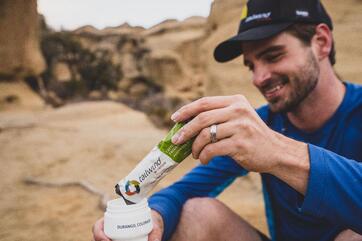 We do our fair share of training and racing here at The Adventure Running Company, as well as going for lovely long days out in the mountains, just for fun. A staple in our pack during and after a run is Tailwind. All carbohydrates, from kale to caramel, are converted into simple sugars before they’re used by your muscles. If that process happens quickly, they’re good exercise fuels. If it happens slowly, they’re healthy dinner foods. Carbohydrates can be one or the other, but it’s difficult for them to be both. When you’re exercising, your muscles can take in energy easily, making simple sugars (dextrose & sucrose) the best fuel choice because they act quickly. They don’t ask your digestive system to do a lot of work when your body is under stress, and therefore they don’t bother your gut or make your stomach hurt. Tailwind’s glucose/sucrose fuel takes advantage of how our bodies absorb nutrients. The combination of Tailwind’s fuel, electrolytes, and water has a synergistic effect, allowing the body to absorb more of each. Once in the bloodstream, the glucose in Tailwind fuels muscles directly, allowing athletes to go longer at higher intensities. Tailwind’s electrolyte profile mimics what you’re sweating out. Fueling at High Altitude: There is a common misconception that there is less oxygen at high altitude. This is not technically true. The same 21% percent of oxygen is in the air at the summit of Mt Blanc as at sea level; what is different is the barometric pressure (PB). The result is that for a given volume of air there are less total oxygen molecules present at high altitude. In addition, the reduced atmospheric pressure at altitude reduces the driving pressure for oxygen to enter the lungs, increases our heart and breathing rates to try and absorb more oxygen and deliver it to our muscles. Plus, hormonal changes occur, like the pumping of adrenaline to help with oxygen transportation and delivery. The only cure for these dramatic changes is time. We need time to let our body adjust, or acclimatise, and increase the number of oxygen-carrying red blood cells that improve our ability to deliver oxygen to the brain and working muscles. Most adaptations occur within two days to two weeks of exposure to altitude. Hydration: High altitude presents the perfect storm for dehydration. The air at high elevation is very dry, so sweat evaporates quickly and we experience increased evaporative losses from our lungs. High altitude also causes an increase in urination. As if that wasn’t bad enough, we lose the sensation of thirst at higher elevations since lower temperatures suppress thirst even when the body needs fluids. The obvious conclusion is that proper hydration is of the utmost importance while training or racing at high altitude. Athletes can lose as much as 12 litres of sweat in a 100-mile race! It is equally important, however, to get adequate electrolytes and glucose in our fuel to ensure the proper absorption of liquid. Tailwind does just that. It keeps you hydrated and provides the optimum ratio of sodium and glucose to keep our inner hydration pumps working at their peak. GI Distress: Your digestive tract gets compromised at altitude. Symptoms like nausea and vomiting are common signs of altitude sickness. At high elevations, the body is working on overdrive so it suppresses the digestive system in favour of increasing its cardiopulmonary reserves. In other words, the heart beats faster and non-essential bodily functions are repressed, resulting in a decline in food digestion efficiency. Tailwind’s use of glucose as its primary fuel source makes it easy to absorb since it doesn’t need digestion to get transported into our blood. Strategies at High Altitude: It is important to have a solid game plan for big days in the mountains. Here are some important strategies to keep in mind:
3 Keys to Recovery
For more information about Tailwind and their excellent products, visit www.tailwindnutrition.frAutumn is quite possibly one of the most beautiful times of year to hit the trails, but with a cold nip in the air and the potential for rainy showers, it is paramount that your kit delivers when you need it. At The Adventure Running Company, we know a thing or two about running kit and what's best to have with you when you're out for a day of adventure! Patagonia has long been our choice of brand for all things outdoors. They deliver exceptional quality items while considering their environmental impact, designed with the most incredible detail in mind, equipping us for days in the mountains, no matter how long and cold. Here are our top 6 items to take with us on such days!Micro Puff Hoody: This jacket has been part of our armory for some time. Super-lightweight and stretchy for excellent mobility and packs away into a little pouch, making it easy to store. The best warmth for weight of any jacket we’ve ever worn. The Micro Puff delivers ultra lightweight, water-resistant, down-like warmth with PlumaFill synthetic insulation—a revolutionary feather light down alternative. The Micro Puff offers exceptional warmth and comfort for long old cold days on the trails. Peak Mission Tights: Designed especially for those runs on the chilly side. Moisture-wicking, breathable tights, they have a handy pocket on the back to store a key, cash or mobile phone. The waistband is exceptionally comfortable with a drawstring to finish the final fit. These tights also feature a reflective logo and reflective strips on the back of the legs. Houdini Jacket: The jacket to take with you anywhere. As its name suggests it is magic to see this jacket pack down into its integrated stuff sack so neatly and minimally. Weighing in at only 96g, this jacket has a durable water repellent coating that helps protect against the elements on those blustery runs and is great to have to hand for an extra layer of warmth. Peak Mission Gloves: These gloves are hands down (no pun intended) the best running gloves I have ever owned. Warm and breathable gloves that, when the wind and rain comes in to batter you, they quickly convert into a water/wind-resistant mitt. The extended cuff on these gloves keeps your wrists warm and offers just that little bit more protection and warmth. Capilene Cool Lightweight Shirt: Patagonia has a massive range of Capilene shirts designed for days with a slight nip in the air to the coldest of winter runs. This lightweight shirt offers exceptional comfort with a comfortable fit. As with most Patagonia garments, the Capilene shirt is made from a high content of recycled materials, a whopping 52% on this occasion, whilst offering excellent moisture-wicking and quick-drying abilities. Everything you need from a base layer for high output days on the trails, whatever the weather. Powder Town Headband: A knit headband with a soft fleece lining for those truly chilly days out running. A great item that keeps your ears and forehead nice and warm, without overheating the rest of you. A stylish addition to any runner's wardrobe. All of these excellent items are now available via Patagonia.com & Ellis-Brigham.comWhen I was a kid all I ever seemed to want to do was to grow up. Make my own money, go where I wanted, eat what I wanted, mostly, just do what I wanted. I'm not entirely sure at what point I declared that I had finally made it as an adult, but I certainly don't recall memories of running through the streets high fiving folk in the celebration, of what I thought was such a milestone in life. Fast forward fifteen years later or so, and one may say that I've been sincerely fortunate to make my way through some of the most excellent years of adulthood, reasonably unscathed. As many of us do, I have collected a varied amount of responsibility along the way that enables a particular way of living. A good job, a mortgage or two, some brilliant relationships, and an incredibly fat cat called Thomas. All of which comes complete with its very own set of significant advantages but also with its stresses. (Thomas can become very unfriendly when he gets hangry). As such, there has come a time where I have felt the need to escape the things I 'ought' to be doing or perhaps the things I should be taking care of. It seems that the very things I wished for as a child, I now spend much of my adulthood trying to free myself from. I suppose when you note it all down like so, it may sound a little bit like adulthood is total rubbish and its all very much work and no play. Well, at times it certainly can feel like that, but I'm here for more than that and being a responsible(ish) adult allows me to test the boundaries, to go to the places I want. To seek and find experiences that fulfil the adventure that I look for, beyond the day-to-day living. Trail Running has offered and, on many occasions, delivered experiences that are stacked with fun, laughter and some incredibly valuable tools that I use in my own way throughout my life. It allows head-space and time to put things into perspective. Freedom of such, similar to the kind that takes you back to when you had so few responsibilities, but it also allows me time to help make those all essential grown-up adulty decisions. It's time away with friends, a time to chew the cud, a time to nurture thoughts and my never-ending imagination. It provokes and inspires ideas and, at times, fills me with a sense of belief that I can do just about anything that I put my heart and mind to. I read somewhere once that running distances is like living a year of your life all at once. There's something within that little saying that certainly resonates with me. During races, I have experienced many emotions over the course of, say, 30 hours. Some vast highs followed by some mega lows. Self-doubt, insecurity but also the incredible feeling of being unstoppable. You feel emotion. Trail Running and pushing those limits accentuates many emotions and, dare I say it, makes me feel quite alive. From the glorious pages of Facebook, and the picture-perfect images on Instagram we're continuously exposed to, the positive and endearing quotes that, if they catch you at the right time, may have you stop and think for a moment or two. One of these little quotes that seems to appear from time to time is 'you can do anything, but you can't do everything'. Ive thought about this one for more than a moment and will choose to ignore its sentiment and keep pushing, keep trying and keep believing.
I suppose we're all trying. Trying to be responsible and all that being 'a responsible adult' entails. Although adulthood can be very confusing and equally terrifying from time to time, it is also an excellent and incredibly fortunate place to be. Trail running may not make the reality of responsibility disappear, but it indeed equips me with the tools to take it all on and the confidence to try absolutely anything and everything. May your 2020 be all about finding that time to run away, I know mine will be! Peas and Love - Nikki We’ve been running our fabulous adventure trips for a while now and often get asked by runners what exactly it is that we offer. So we thought we’d put it out there and hopefully put some of your questions, worries and myths to bed in this post and tell you exactly what it is that we do and why you should come and join us! 1) We will never leave you behind Scared about being the slowest runner? Worried that you’re not fit enough? Think that everyone else will be super-fast? Stop right there! The biggest concern that most of our runners have is that they are not good enough for our trips. The good news is that all of our runners to date have really surprised themselves with their ability. We always work together, as a group, to ensure that the pace is suitable for everyone. We stop to take pictures, to talk techniques, power-walk up the hills and pause for countless snack breaks. We have guides at the front and back, to keep the group together, meaning that you are never at the back. We have short-cuts and extra loops at our disposal and bad weather options planned in if required. So don’t worry, we’ve got your back and we want you to enjoy this! 2) We check that you have the right kit Trail-running doesn’t have to be an expensive sport and most kit that you have already will be perfectly transferable from road to trail, but those of you that are new to it may well be baffled by what exactly you need to bring with you on one of our trips. We provide detailed kit lists and are always on hand to offer advice when it comes to ensuring that you have the right kit with you for the conditions we are likely to encounter on our adventure. We will also double-check everything on your arrival, to ensure we don’t head out into the hills under-prepared. 3) We take you to beautiful places Our destinations are not only fantastic for a trail-running adventure, but also provide all the ingredients for a brilliant holiday - great food, stunning scenery, quirky towns and villages, hand-picked hotels and rustic mountain refuges. This is your hard-earned holiday time and, although running is the main event, we know that’s not the only thing that makes our trips special. 4) We use qualified leaders, coaches and first aiders
We take your safety very seriously. It’s our number one priority. This is why we always use qualified, professional guides, with local knowledge and first-aid certificates. We never compromise on that, full stop. 5) We want you to have a great experience We love what we do - that’s why we do it! We want you to fall in love with the mountains, to go away feeling like we do when we spend time in them, to learn new tips and techniques, to eat snacks on the go, to make new friends, to laugh until your sides hurt, to enjoy the journey and to go home feeling like you have had an absolute blast! Here's hoping that we see you soon on one of our many trips that we have coming up for 2018/2019! Peas and love - Sam & Nikki When I first got into trail-running, I discovered that I was a natural on the uphills. On training days I flew up the hills; when racing, this is where I overtook people. But on the downhills I would be wasted by many of those same people I had overtaken on the way up. I soon realised I needed to work on this. I had never tried to run fast downhill, but it looked like fun! How hard could it be? As trail runners, we train for running uphill. We do numerous hill repeats and slog up huge ascents with purpose. It’s easy to ignore downhill training because it’s perceived to be easy. Downhill running is fun. It’s exhilarating and exciting. But to master the art of downhill trail-running takes a lot of practice. Get it wrong, brake too often and your quads get a battering. Or get carried away, lose your balance, trip and fly superman-style down the trail and flat on your face. Run a mountain trail race and it’s easy to see who’s comfortable on the descents and who isn’t. But it’s definitely something we can all learn. Let’s take a look at the key components to proper downhill technique. 1) Quick Foot and Leg Turnover If there’s one thing that sets apart a strong descender from a weak one, it’s their cadence. Fast, controlled downhill running requires you to be light on your feet, landing on your mid/forefoot, with quick leg turnover and your feet underneath your body. Extended, heavy strides, landing on your heels, will leave you unbalanced, and create a braking effect that wears out the legs and quads. Through quick strides, your contact to the ground is short and light. Even if you were to hit an unstable rock or land awkwardly on a root, it shouldn’t matter because the next foot is there to quickly bring you back to balance. At first this will feel unnatural, and short choppy steps that move all over the trail may seem like a waste of energy. As you get more efficient and confident in your downhill running, it will save a lot of the stress and strength by absorbing all the impact. 2) Lean Forward, Not Back When you’re running down a hill, it’s natural to feel timid and lean back. But by leaning back and trying to brake with your heel, you’re creating unnecessary strain on your legs and quads. The good news is that we have the benefit of gravity, and proper downhill running let’s gravity do all the work. Instead of leaning back, you want to lean forward into the hill, to increase stability. Lean forward so that your body creates a T shape with the trail, leaning from the ankles rather than the waist. This enables you to lift your legs up, instead of out in front of you, and will keep your foot strike light and on the mid-foot, instead of throwing all your weight and force into the heel. 3) Look Ahead, Not Straight Down When doing any downhill sport, you’re always looking ahead at the line you wish to follow. Where you look is where you point your body, and thus where you go. The same thing will happen with running, however when running downhill, especially on technical terrain, the natural thing to do is look straight down at your feet. Instead you should keep your gaze a few metres in front of you, to pick your line and see what needs to be considered up ahead. Your brain does amazingly well at addressing each obstacle, even if you aren’t looking straight at it. 4) Use the Upper Body for Balance Use the upper body for balance, and let the arms flow in the air as if you’re gently flapping them up and down. Don’t tighten the shoulders or keep the arms tucked in close to the chest. Relax, and use downhill periods to give your upper body a bit of a break. 5) Descend With Confidence The second you lose confidence when running downhill is the second you tighten up and slam on the brakes. Attack the descent just as you would the ascent, with confidence and intention. How to Train for Descents
Reading these tips and watching a pro do it makes downhill running appear easy. But as you probably know from experience, it’s not. It takes a lot of practice to gain confidence, and many hours of training to gain speed. So what can you do to encourage improvements?
Just a few weeks of focused downhill training can show significant results. And a good pair of trail shoes are essential to maximise grip and support. When done properly, speeding down a hill is not only a blast, but it’s a great way to make up time and pass the many runners who don’t take it seriously. So go out and dance with that mountain. She’s ready to tango. Sam Brooks is one of the founders of the Adventure Running Company. She loves running both up and down hills. The problem with pregnancy is that it does tend to throw you a little off your stride when it comes to running. Whether you decide to keep pounding the trails with your bun in the oven, to just slow down a little or to back off completely, for most of us mere mortals it’s likely that we’ll have to stop – at least for a little while. And while there are those who keep running until they’re about to drop, I’ve yet to meet anyone who has arrived at the maternity unit in their Salomons, had a baby and galloped back out again with a babe in arms. Add to this the time and energy that your tiny human consumes, the general zombie state that you’re in due to all-night partying with baby and of course the physical recovery, and its easy to see why some of us find it hard to pull on the kicks and hit the trails again post-pregnancy. Lying in the recovery room after my second C-section, I wondered how I would ever walk again, let alone run, and that was before the pain meds had worn off. After my first baby I couldn’t wait to get back out on the trails again, but dutifully waited the mandatory eight weeks before bolting out the front door for my first run. This time was different. It took me three weeks to be able to stand up straight and running seemed like a distant dream, something to look forward to in a few years time. Sure, it took double the amount of time this time, but four months after Oscar arrived I was given the green light. The wait was worth it. Being back in the game felt incredible and I finally felt ready - despite operating on a daily average of three hours sleep and seven large mugs of filter coffee. The feeling of running again on snowy trails, the cold, fresh mountain air and music in my ears instantly soothed my tired, anxious brain and reminded me how important it is to take time like this for me and only me. Now, seven months post baby and with marginally more sleep, I have a few tips and tricks for getting moving again post pregnancy. Get the green light Step one - make sure you’re ready physically. There’s no point in risking damage or injury by starting again too soon. Your midwife or doctor will be happy to check and advise you and will even give you tips on how to run. Seriously – no heel striking post-baby – your pelvic floor will thank you! Seize the moment When the moment arises and your baby is in good hands, go! Forget the hoover and ignore the pile of dirty plates in the kitchen. Grab your moment, your music and get out. Ignore your brain If you’re anything like me, your brain will automatically present you with a million reasons not to run, ranging from the raisins that need to be extracted from the car seat to the possibility of a hurricane hitting. Ignore it and go. Use your family & friends If there is help on offer that will allow you even 20 minutes to run, take it. If there’s none on offer, ask for it! Family and friends will often be super keen to help out and most will be glad to see you getting some much needed me-time! Find your tribe This is a big one. For various reasons, I thought I’d lost my running buddies and my motivation took a dive because of it. Turns out, life happens and people’s lives change, so if your free time doesn’t match with your old buddies, look around for other mums who’s lives may have more symmetry with yours. Often you’ll find running groups nearby and if not, start one! Go out regardless So it’s raining? Bad excuse. Grab your jacket and go. You’ll feel even better for getting out and battling the elements. Incentivise I mainly do this with food/chocolate/wine. Set a goal Consider entering an event or race. However big or small the event, chances are it’ll get you out and training on a more regular basis to make sure you’re ready. Run your race and enjoy the moment. You’re a superhero - don’t ever forget it. These are just my thoughts and experiences, what were yours? Everyone has their own journey with pregnancy and parenthood and personally, I’m a big fan of talking about it. Feel free to comment, share and discuss!
Written by the lovely - Laura Wilson North who is a fantastic mum, excellent runner and all round wonderful person! So you’re a runner? You love nothing more than lacing up your trainers, stepping out of the front door and nipping round the block to crack out a mile or two, or maybe more! But could your running routine do with a bit of a shake up? Could you broaden your running horizons? I’m a runner. I’ve been running for around 9 years now and I’ve completed numerous 5k’s, 10k’s, and half-marathons as well as 13 marathons and 4 ultra-marathons. But there’s one thing that 95% of them, and most of my training, have in common, and that’s tarmac! I’m a tarmac-loving road-runner you see, I live in an urban area after all and have become used to simply heading out on my local routes. Even when I venture into the surrounding countryside I wind my way around the maze of lanes. Recently though, I decided it was time to freshen things up. Whilst I love (pretty much!) every run that I do, it was starting to feel like something was missing. I felt I needed more of an experience from my running, more reasons to keep getting out there, more of an adventure perhaps? So I decided the time had come to broaden my running horizons and dip my toe into the world of trail running. I’ll be honest, I was nervous about it! Despite having thousands of running miles in the bank, I still felt like I was venturing into a world of the completely unknown. Where would I run? What should I wear? What do I need to take with me? How would I cope without that familiar solid surface beneath my feet? I had so many questions I felt like a beginner all over again! I won’t lie, trail running is very different to road running, not in a negative way, but in a wonderfully liberating, inspiring and adventure-filled kind of way! So I thought I’d share my ten top reasons to make a move from road to trail. 1. Get close to nature – leave the traffic, exhaust fumes, pavements and buildings behind and breathe in the fresh air of the fields, forests, hills and mountains whilst you enjoy being amongst the trees, flowers, lakes and green open spaces. 2. Push your boundaries & challenge yourself – it’s almost certain that the terrain will be more challenging than what you are used to, the ground will be uneven beneath your feet and there will be obstacles aplenty with tree roots, rocks and even animal burrows to be avoided, but that’s part of the fun and it will challenge you mentally as well as physically while you run! 3. Buy some shiny new running kit – if you really needed an excuse to treat yourself to some great looking new gear, you just found it! Obviously most of your usual kit will be multi-purpose BUT you will need to invest in a pair of trail running shoes. There is a huge choice out there with varying options of grip, toe protection and ‘waterproofing’, so take a bit of time to do your research and visit a specialist trail running shop. Also, as you need to carry items with you for safety such as water, food supplies, a mobile phone and a map, then a hydration vest or small backpack is essential. 4. It’s kind of like a mobile picnic! – take all of your favourite snacks and treats with you and enjoy them as you go! It’s important to keep well-fuelled, as well as well-hydrated, so whether flapjacks, peanut butter wraps or even Percy Pigs (!!) are your thing, it’s all good, just pack them up and take plenty of breaks to enjoy them! 5. It can lead to the most wonderful adventures – when you become more confident you can get off the beaten track and explore new places, both at home and abroad. Trail running can be done the world over in some of the most beautiful destinations, so use it as a way not just to broaden your running horizons but maybe also your travel horizons too. 6. Share your adventures – whilst many of us road runners simply head out alone as we try and fit our run into our hectic work and family lives, trail running is definitely something which should be shared! Run with friends, run with club mates, run with your partner, but don’t run alone. The shared experience is a huge part of the joy! 7. Become a stronger runner – notice I said stronger and not faster! Speed and pace are less important out on the trails. It’s not about how fast you go but where you go and how much fun you have. So leave the GPS behind and just enjoy the experience. And don’t be afraid to walk when necessary! It's also a good idea to work on improving your core strength which in turn will help make you a better balanced runner on the uneven terrain, and ensure you can be out for longer and enjoy more of what your chosen run route has to offer. 8. Helps reduce injury risk – following on from the last point, it’s generally accepted that trail running is much kinder to your joints and soft tissue with a lesser impact than road running. Plus, as the ground is uneven, it’s less repetitive than the flat straight road which will mean your muscles, tendons and joints are challenged in different ways, reducing problems with overuse injuries. 9. So much variety & choice – flat or hilly, forests or fields, mountains or valleys, there is so much variety to enjoy and to keep your adventures fresh and exciting. And the views are often spectacular and breathtaking too! 10. Fun and enjoyment, guaranteed! - I had the most awesome trail running experience with the girls from The Adventure Running Company on their Essential Trails weekend in Chamonix. We made our way across valley pastures, through forest trails and up and down mountain paths. I was a total trail novice and yet they made it such a welcoming, fun and enjoyable experience I felt like I’d been running trails all my life! So if you are thinking about giving trail running a go my advice is just go for it. You won’t regret it and you never know what adventures await... Nikki Chamberlain is a two-time finisher of the South African Comrades ultra-marathon, has just completed the Boston & London marathon double, and is an all-round lovely lady and super-strong runner who doesn't know her own strength.
Balance, it terrifies me. No other word is comparable in the deep dread it provokes, other than perhaps ‘contentment’ and ‘celery’ (a bitter aberration of the plant family). Work-life balance; emotional balance; personal balance – I’ve never wanted any of it, and the more time that passes, the more compelled I feel to run, stumble, and face-plant with ever-greater vigor in the opposite direction. Endurance running for me is a textbook illustration of that constant tension. Life is at turns complex, confusing, over-whelming, mystifying. Running is the simple part. It helps to bring order to an inherently disordered world. But the trade-off with order is comfort, familiarity, that dreaded…balance. It is human nature, a biological imperative, to find the path of least resistance, to preserve body and flesh. But running into discomfort, unfamiliarity, feeling constantly unbalanced, that moment of total physical and mental exhausted-ness - that is the sweet-spot I keep chasing. That is why I suspect I discovered an affinity (if no real talent) for ultra-running, but we all find it in different places. Years ago, my mum told me, out of maternal concern undoubtedly, that I would give up all this running malarkey when I found a proper job. I found a job and the malarkey continued, if anything it intensified, amplified by the passivity of a day spent sat a desk, staring into a screen. No matter how interesting the words on that page, or supportive my colleagues, or the satisfaction of nailing a sharp tie and suit combination, it can never be enough. So why not pack it all up, grab some trainers and depart for a life that is anything but ‘corporate’? An old university rowing friend spent several years, shortly after graduating, as a semi-pro triathlete. Reflecting on his experience years later he spoke about how challenging he found it but not for the reasons he necessarily expected. The hard grind was the easy part, sweating came naturally. He spoke about life having four pillars: a hobby, a career/job, friends, and family. What he had not appreciated was how vulnerable he would feel when three of those pillars were stacked into one. As a paid athlete his hobby was his career and comprised of most of his friends as well. When results weren’t going his way, through injury or form or just sheer bad luck, everything was left teetering on one pillar – family. It was a precarious dynamic and one that many semi/pro athletes will struggle and persevere with daily. Do I use that reflection as an excuse not to chase some aspirant dream? Not quite, I am about as talented as a disorientated snail and care too much for Ben n’ Jerry’s Chocolate Chip Cookie Dough ice cream than I do podium finishes. Instead, it’s always served to me as an instructive lesson in that elusive ‘work-life’ balance and how comforting, how desirous it seems. But I don’t run for balance or contentment. I run for the discomfort, and the hurt, and the aches. I run for the magic of the memories and the incredible people you meet along the way. I run for the catharsis, and the simplicity of the moment. I run for the beauty of my surroundings but mostly the peanut-butter pretzels at the next aid station. I don’t crave a balanced life. I desire a life bursting at the seams with extraordinary moments and I intend to be exhausted by the end of it all. Chris McCarthy was a fellow TransRockies Runner in 2015, completed the Grand to Grand Ultra in 2017, is a fantastic runner, great friend and is very modest about his achievements!
1. Get outside Sure there are great things inside, warm things, social things and of course the lovers but what’s outside? Endless possibilities and a place to explore. 2. Don't give a shit You are not the best and even if you are there will be someone else that will become better than you. But you can always be the best you can be.. always. So don’t give a shit if you loose or if you had a bad day and just didn’t want to go out. It’s ok.. life will still turn up tomorrow and give you another chance. That being said........ 3. Time will run out We are not on an endless loop here. Life has a way of stopping for us all. So get on with the things that you really want to do. You wont be lying there on your last day saying .. Gee I wish I had done less. It certainly is not a race to the finish but there is a finish line for us all. Don’t leave it too late. 4. Learn from others Society has a way of ignoring the young and the old and squeezes the middle age groups to produce and protect the others. The children of today have so many talents and are our future. They deserve to be heard and the same goes for the ageing. With decades of knowledge and a network of information they need to be respected and absorbed. We can all learn new skills from all generations and with this exist respectfully no matter your age. 5. Give back something Be kind and thoughtful. This planet is bursting with confidence but is shrouded by communities failing to support each other. This is a widening trend and one that slowly frays the fabric of society. But we all collectively can do a little more to help. If you love this world, it’s time to act. Congratulations! You are now on your way to being awesome, so what’s your next move? Writer Douglas Simpson Douglas is a mountain runner & founder of Full Course Trails You can find out more about Douglas and his work @ Blog http://fullcoursetrails.com/fct-blog/ FB https://www.facebook.com/fullcoursetrails/ Instagram https://www.instagram.com/fullcoursetrails/ Twitter https://twitter.com/FCTrails |
Authors
thoughts, feelings and tribulations about running by runners. |
RUN EXPLORE ADVENTURE
The Adventure Running Company Ltd. Registered in England & Wales, no. 10670502
© 2023 The Adventure Running Company All Rights Reserved. Site design by Nikki Barnard // Illustrations by Kate Sutton
